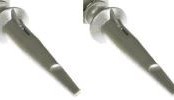A bad probe!
January 06, 2017
on
on

Editorials in the Elektor newsletter are usually about current or historical technological developments, but I would like to kick off 2017 with an editorial about a common problem in the lab. Most of you have probably experienced it sometime. You’re making measurements on a circuit and you see strange waveforms on the oscilloscope screen that have no business being there. After a bit of troubleshooting (and maybe a bit of swearing) you discover that the trouble is not in your circuit, but instead a bad contact in one of the probes. That’s certainly annoying, but it’s not all that uncommon.
Recently I was looking over the shoulder of one of our designers in the Elektor Labs who was testing a newly built circuit board for a magazine project. The clock signal looked perfectly okay on the oscilloscope, but the output signal was full of strange noise pulses which shouldn’t have been there. While we were trying to track down the problem, the cable of the probe connected to the output was accidentally nudged, and the noise pulses suddenly disappeared. “It’s my lucky day again,” said the designer, “a bad probe!” The trouble was a poor connection between the probe and the cable.
We have experienced this sort of problem more than once, and it’s not surprising in a lab where the probes are used by a lot of different people, no matter how neatly they are hung on the rack. Some people are not so gentle on the equipment, so internal damage to a probe or cable can happen occasionally. Although all of our probes are good products from reputable manufacturers (not the cheap stuff you get with simple oscilloscopes), probes are vulnerable parts and need to be treated with care. Repairs are usually impossible, so it’s best to discard a suspect probe before it causes someone else a lot of problems and lost time.
By the way, it’s a similar story with breadboards. Recently we have been using them more intensively to quickly build and test simple circuits. However, after you stuff thick wires or components with wide pins into a breadboard a few times, you run the risk that the internal spring contacts become unreliable. When you notice that, the best solution is to discard the breadboard right away and get a new one. Fortunately, a breadboard costs a lot less than a good probe.
Recently I was looking over the shoulder of one of our designers in the Elektor Labs who was testing a newly built circuit board for a magazine project. The clock signal looked perfectly okay on the oscilloscope, but the output signal was full of strange noise pulses which shouldn’t have been there. While we were trying to track down the problem, the cable of the probe connected to the output was accidentally nudged, and the noise pulses suddenly disappeared. “It’s my lucky day again,” said the designer, “a bad probe!” The trouble was a poor connection between the probe and the cable.
We have experienced this sort of problem more than once, and it’s not surprising in a lab where the probes are used by a lot of different people, no matter how neatly they are hung on the rack. Some people are not so gentle on the equipment, so internal damage to a probe or cable can happen occasionally. Although all of our probes are good products from reputable manufacturers (not the cheap stuff you get with simple oscilloscopes), probes are vulnerable parts and need to be treated with care. Repairs are usually impossible, so it’s best to discard a suspect probe before it causes someone else a lot of problems and lost time.
By the way, it’s a similar story with breadboards. Recently we have been using them more intensively to quickly build and test simple circuits. However, after you stuff thick wires or components with wide pins into a breadboard a few times, you run the risk that the internal spring contacts become unreliable. When you notice that, the best solution is to discard the breadboard right away and get a new one. Fortunately, a breadboard costs a lot less than a good probe.
Read full article
Hide full article



Discussion (3 comments)
Steve Drake 8 years ago
all the things we can do to check or keep a probe in good repair? I work
at a University and we have over a hundred scopes so at least that number
of scope probes. Students and Grad students can't tell if a probe is bad
and heck even I can't say for certain. We run the probe check and thats
ok usually but on low level signals and noise how can we tell? What about
a network analysier would that show up problems? Just wondering if there
is a sure fire way to know if the scope probe to connector is ok.
Just thinking out loud.
Regards,
Dither
Daniel Bogdanoff (Keysight) 8 years ago
Typically it will be visibly clear that the probe is broken because it will be cracked, bent, etc.
A network analyzer, TDR , or cable tester setup should be able to check a probe but that's often overkill for probe testing.
-Daniel
Keysight Oscilloscopes
Geoff Carter 8 years ago
If a scope probe gives a good probe compensation waveform (using the square wave from the scope) then it should be in good repair. The only exception might be if the ground connection is faulty, which might not show in a compensation test. An Ohmmeter can be used to check for ground continuity.